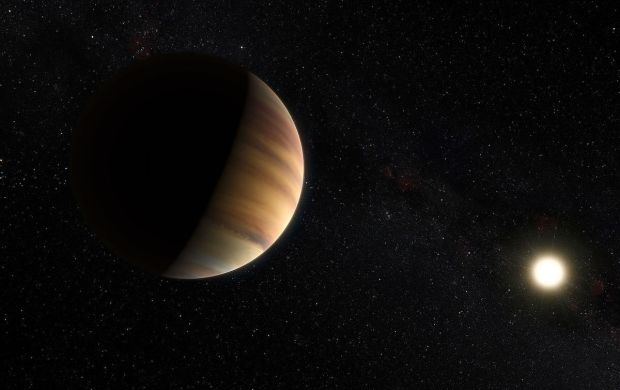
This artist’s view shows the hot Jupiter exoplanet 51 Pegasi b, sometimes referred to as Bellerophon. This was the first exoplanet discovered around a Sun-like star and was found in 1995 by Didier Queloz and Michel Mayor. Credit: ESO/M. Kornmesser/Nick Risinger.
It may be hard to imagine today, but just over 30 years ago, we knew of no planets in the universe besides those around our own Sun.
Of course, for centuries, it was easy to imagine — for astronomers and sci-fi authors alike — that distant stars hosted planets of their own. And as early as the 1850s, astronomers were claiming they had found evidence for extrasolar planets, mostly in the form of the subtle effects that planets exert on their stars. But none of those claims withstood further scientific scrutiny. Although astronomers had the right ideas and had conceived the right techniques, they lacked instruments precise enough to make them work.
It wasn’t until 1992 that the first exoplanets around another star were confirmed. These planets were perhaps even more exotic than popular imagination. Instead of orbiting a Sun-like star, they belong to the pulsar PSR B1257+12 — a highly magnetic, fast-spinning neutron star. The first discovery of an exoplanet around a Sun-like star followed in 1995 with the detection of 51 Pegasi b.
Since then, the field of exoplanets has exploded, thanks to the rise of increasingly precise and sensitive ground-based telescopes and revolutionary space-based observatories like NASA’s Kepler and TESS missions that have scanned huge swathes of sky for planets that transit their host stars, dimming them temporarily. And with new facilities like the James Webb Space Telescope and the upcoming Habitable Worlds Observatory, we are getting ever closer to the holy grail of exoplanet science — having the capability to detect life on other worlds.





